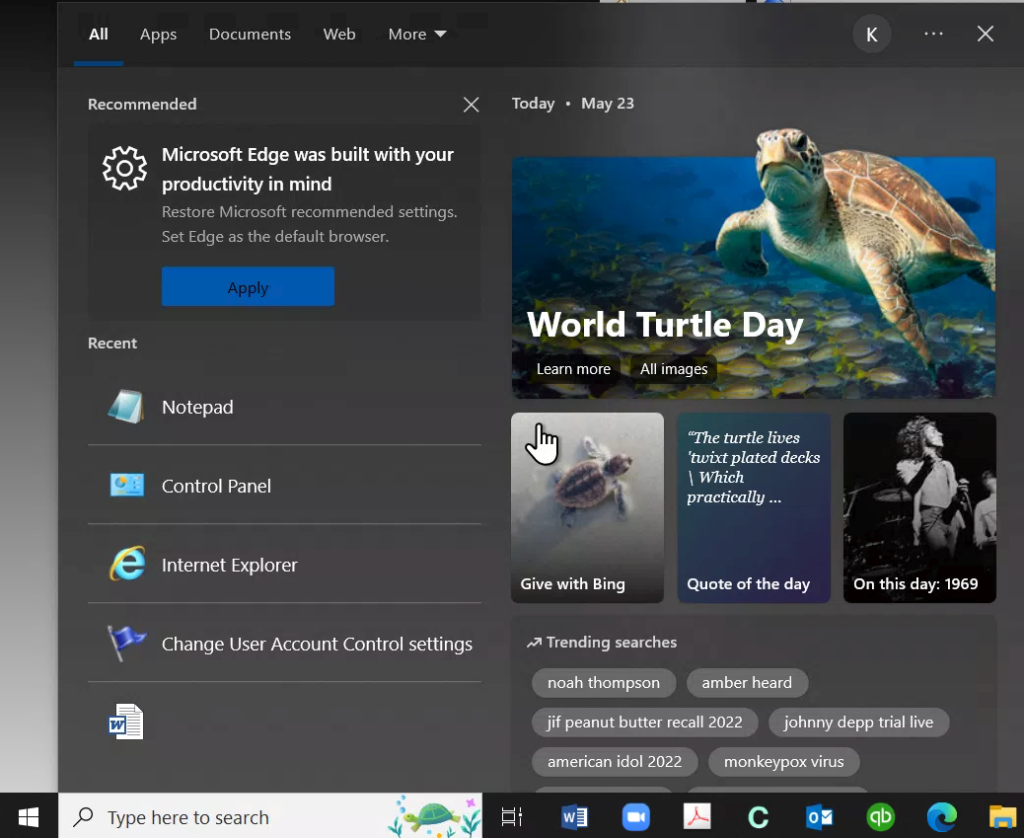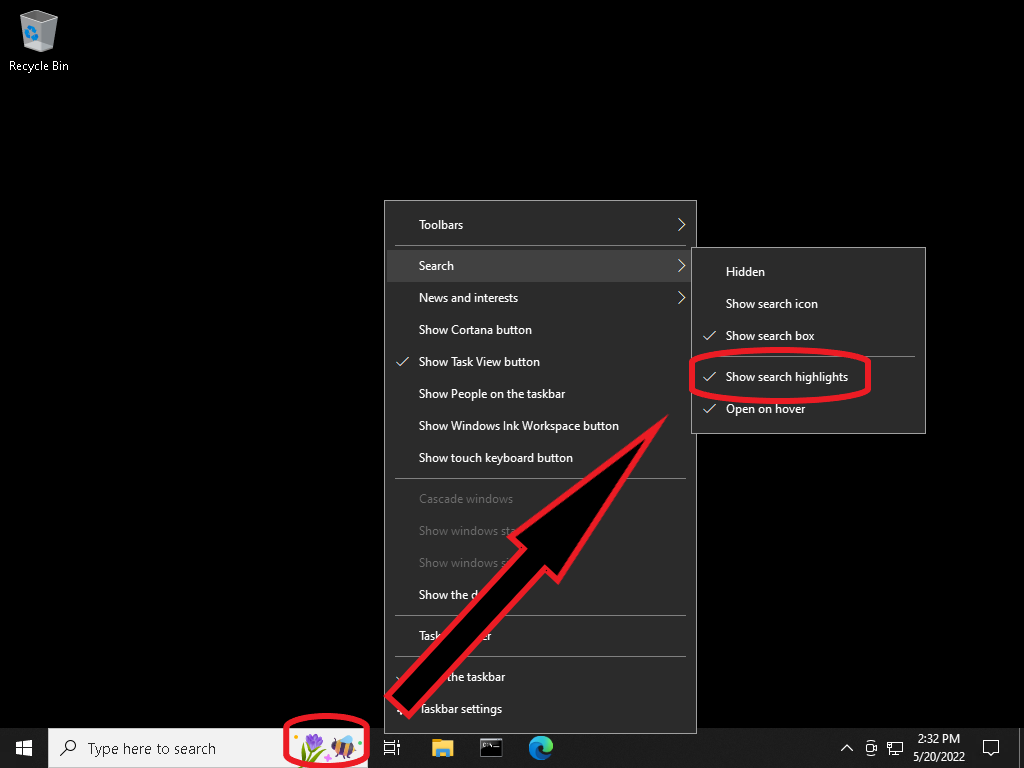Well, the whatever that is from my last post would appear to be Microsoft’s answer to Google’s Doodle, except if it were second-to-market, minimalistic, and intrusive on the desktop. I still haven’t found Microsoft’s announcement of this feature, whatsit, or whatever. But “Search Highlights” does sometimes pop up search results on mouseover, just not immediately. Triggering the search related to the search image is done by mousing over the image and pausing for at least one second. Apparently, it changes daily.
Here’s the turtle version, for May 23rd, World Turtle Day.

And today, May 24th, is apparently for the European Day of Parks.

Again, it can be turned off by right-clicking the start bar, and next to Search, unchecking ‘Show search highlights.’



